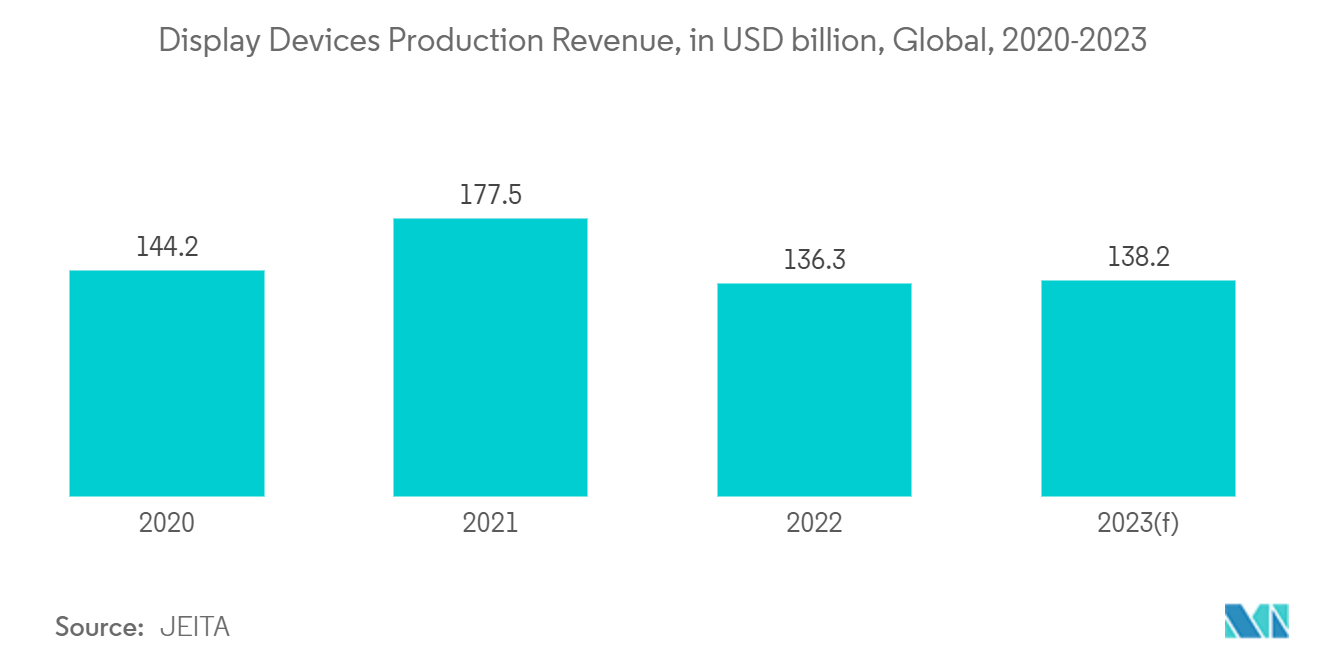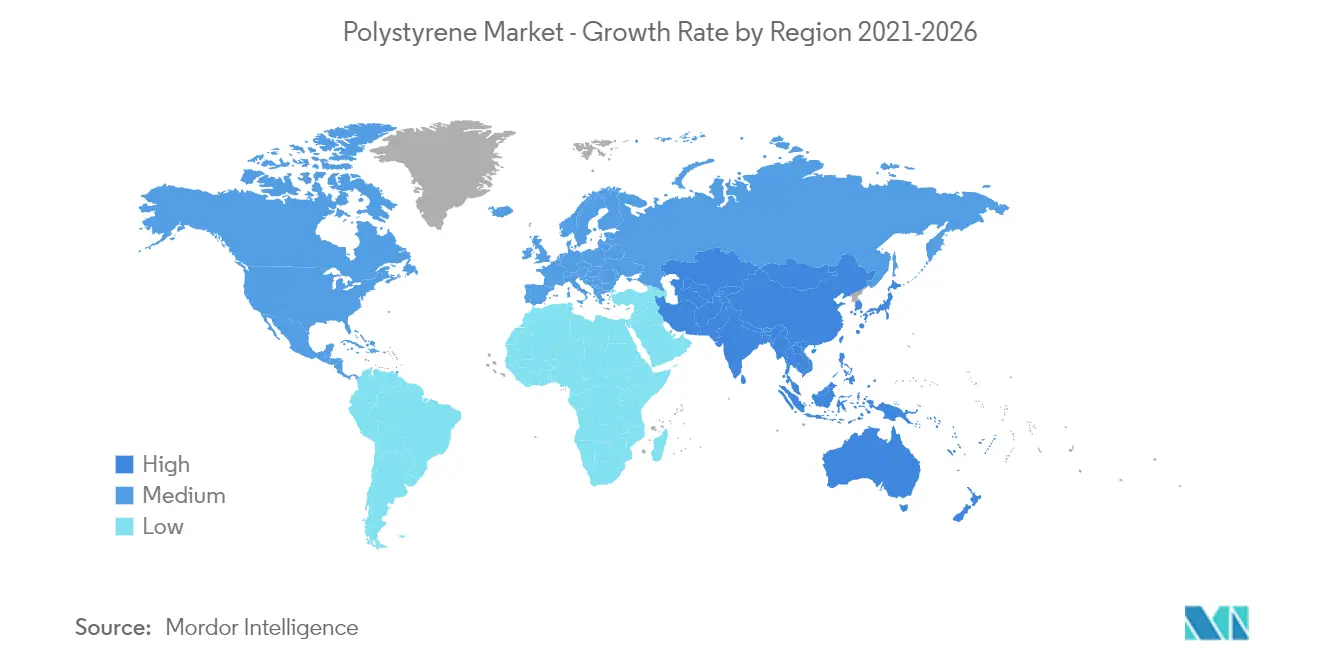Market Trends of Polystyrene Industry
This section covers the major market trends shaping the Polystyrene Market according to our research experts:
High Impact Polystyrene (HIPS) Type to Dominate the Market
- High-impact polystyrene contains rubber. It is less transparent than GPPS. It is mainly used for products that require high-impact resistance.
- HIPS has a standard flow but is less glossy than GPPS. It is crack-resistant and is used in injection molding. HIPS also has good dimensional stability. It is easy to paint and glue and has a low cost. It is used for housing and covers, low-strength structural components, printed graphics, models and prototypes, fixtures, etc. Majorly, HIPS are sold in high and medium grades. Other grades include ignition resistance, high-gloss grades, and environment stress crack-resistant grades.
- Packaging is the largest segment for HIPS. It is used for food packaging (meat trays, egg cartons, fruit trays, dairy packaging, etc.), industrial packaging, and consumer packaging (cassettes, CD covers, etc.). The food and beverages industry accounts for ~3% of India's GDP and is the single largest employer in the country, with more than 7.3 million workforces. In 2021, Nestle India Chairman said that the Indian packaged food market is expected to double and grow up to USD 70 billion in the next 5-10 years, led by factors that include economic growth, demographic dividend, and growing e-commerce.
- Driven by the rise in population, demand for packaged food and beverage is set to witness further growth during the forecast period. The unprecedented shift from rural to urban living is a major demographic that is impacting the global consumption of packaged food.
- However, the United States has banned the use of polystyrene in food packaging products such as boxes, containers, and carry bags, which is likely to impact the market growth negatively.
- HIPS are also used majorly in electronic and appliance applications, such as in computer housings, TV housings, and freezer and refrigerator liners appliances housings. As per data published by JEITA, the electronics products revenue increased significantly in 2021 as a compared pandemic period of 2020.
- Asia-Pacific is the largest consumer of high-impact polystyrene. It also produces about half of the world's HIPS. Europe and North America follow Asia-Pacific in consumption. Asia-Pacific is forecasted to be the fastest-growing region during the forecast period.

Asia Pacific region to Dominate the Market
- Asia Pacific region consists of various emerging economies such as India and China. The demand for different end-user industries, such as construction and healthcare, is expected to rise significantly in the upcoming years.
- As per the forecast given by the Ministry of Housing and Urban-Rural Development, China's construction sector is expected to maintain a 6% share of the country's GDP going into 2025. Keeping in view the given forecasts, the Chinese government unveiled a five-year plan in January 2022 focused on making the construction sector more sustainable and quality-driven.
- India is gearing up to embrace urbanization by leveling up its existing infrastructure in cities. To support the same, the country has overhauled its reforms, such as the Real Estate Act, GST, REITs, etc., to eliminate unnecessary lags in construction targets. Industrial and commercial infrastructure in the country has emerged as one of the high-growth sectors. The Indian government has been formulating initiatives like easing the rules to attract FDI inflow in the construction sector to expedite development across the nation.
- The Vietnam construction industry is one of the best-performing countries in the Asia-Pacific (APAC) region. Despite losing momentum due to COVID-19, it has continued to grow strongly in 2021.
- China is the world's largest electronics production base and offers tough competition to the existing upstream producers, like South Korea, Singapore, and Taiwan. Electronic products, such as smartphones, OLED TVs, tablets, and so on, have the highest growth in the market in the consumer electronics segment. With the increase in the disposable income of the middle-class population, the demand for electronic products is projected to grow in the near future.
- Furthermore, the Chinese government has started implementing policies to support and encourage innovations in medical devices. The 'Made in China 2025' initiative aims to improve industry efficiency, product quality, and brand reputation. This is expected to increase the number of domestic medical device manufacturers, thus, increasing the competitiveness in the market. Demand for polystyrene exists in the medical device sector, in disposable items, such as tissue culture trays, test tubes, Petri dishes, diagnostic components, and housing for test kits, among many others.
- The healthcare sector in India is expected to reach USD 372 billion by 2022, mainly driven by increasing health awareness, access to insurance, rising income, and diseases. The medical sector in India is benefiting from the growing population at a rate of 1.6% per year. An aging population of over 100 million, rising incidences of lifestyle diseases, rising incomes, and increased penetration of health insurance are fueling the growth of more sophisticated and accurate medical devices in the industry.
- Hence, with the growth in the various end-user industries in the country, the demand for polystyrene is estimated to increase during the forecast period.


